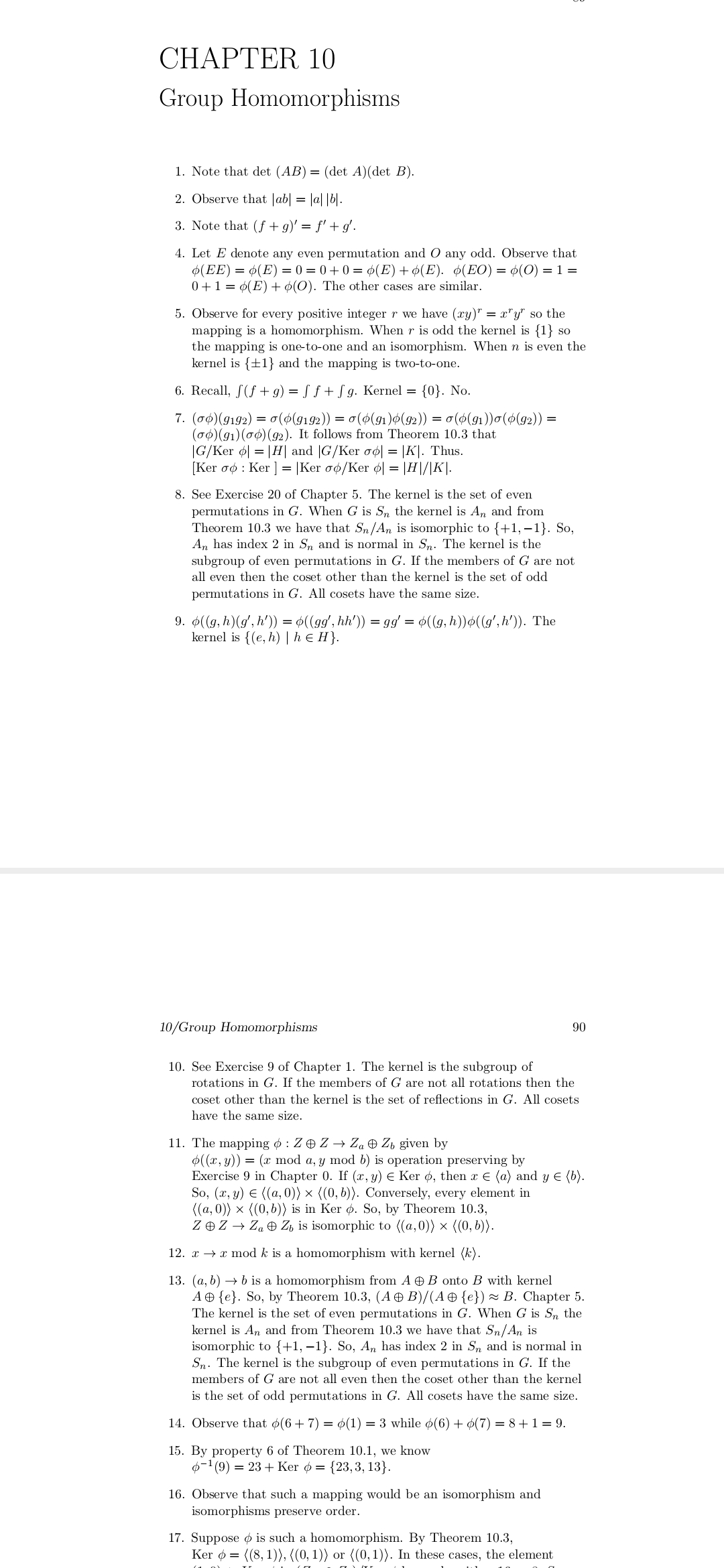What are the properties of group homomorphisms, particularly regarding kernels?

Understand the Problem
The question discusses concepts related to group homomorphisms, including kernels, homomorphism properties, and specific mappings. It seems to request clarification or exploration of these mathematical principles.
Answer
The kernel of a group homomorphism maps to the identity element, forms a normal subgroup, and indicates how much detail is lost in the mapping.
The kernel of a group homomorphism maps to the identity element in the target group, is a normal subgroup of the original group, and its size indicates the extent to which detail is lost in the homomorphic mapping.
Answer for screen readers
The kernel of a group homomorphism maps to the identity element in the target group, is a normal subgroup of the original group, and its size indicates the extent to which detail is lost in the homomorphic mapping.
More Information
The kernel of a homomorphism provides insight into the homomorphism's injectivity, with a trivial kernel (containing only the identity element) indicating that the homomorphism is injective. The first isomorphism theorem states that the original group modulo the kernel is isomorphic to the image of the homomorphism.
Tips
A common mistake is to forget that the kernel must always map to the identity element in the target group. Ensure that when verifying if a kernel forms a normal subgroup, you check normality in the context of the specific group's operation.
Sources
- Group homomorphism - Wikipedia - en.wikipedia.org
- Kernels and Images of Homomorphisms - Fiveable - library.fiveable.me
- Intuition on group homomorphisms - Mathematics Stack Exchange - math.stackexchange.com
AI-generated content may contain errors. Please verify critical information